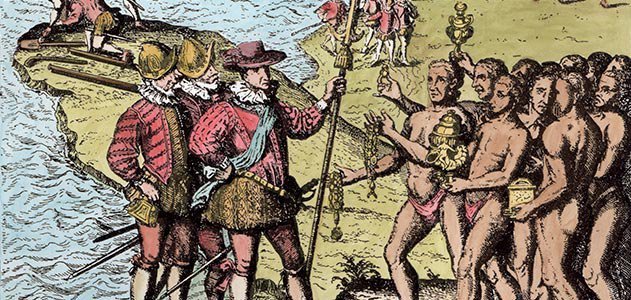


11/21/2021
Earlier: A Reader Says That Columbus Didn’t Find Civilization When He Landed — He Found Cannibals
Most people from the Caribbean Islands look like white, black, or in-between, while most people from the Latin American mainland look white, Amerindian, or in-between, with blacker people mostly seen along the coasts.
Occasionally you see a mestizo-looking islander, such as singer Jennifer Lopez, but not many.
Geneticist David Reich’s new finding is that there were never many Caribbean islanders.
Here’s a story I missed from a year ago:
Ancient DNA Is Changing How We Think About the Caribbean
New research delivers surprising findings about Indigenous people in the region before contact with Europeans.
Dec. 23, 2020
By David Reich and Orlando Patterson
Dr. Reich is a geneticist at Harvard who specializes in the study of ancient DNA. Dr. Patterson is a sociologist at Harvard with expertise in the Caribbean.
In 1492, Christopher Columbus touched land for the first time in the Americas, reaching the Bahamas, Hispaniola (present-day Dominican Republic and Haiti) and eastern Cuba. After he returned to Spain he reported that he had encountered islands rich in gold. A few years later his brother Bartholomew, who also traveled to the Americas, reported that Hispaniola had a large population whose labor and land could be put to the advantage of the Spanish crown. He estimated the population at 1.1 million people.
Was this figure accurate? It soon was a matter of dispute. Bartolomé de las Casas, a Spanish monk and colonist who became the first chronicler of the human disaster that unfolded in the Americas after the arrival of Europeans, estimated a far larger number: three million to four million.
The current population of Haiti and the Dominican Republic is 22 million.
The population size of “pre-contact” Hispaniola would continue to be a contested issue until the present day, not least because of its profound emotional and moral resonance in light of the destruction of that world. Modern scholars have generally estimated the population at 250,000 to a million people.
Some of the arguments for large population numbers in the pre-contact Americas have been motivated by an attempt to counter a myth, perpetuated by apologists for colonialism like the philosopher John Locke, that the Americas were a vast “vacuum domicilium,” or empty dwelling, populated by a handful of Indigenous groups whose displacement could be readily justified. In a similar vein, some of the arguments for large population sizes have been motivated by a desire to underscore how disastrous the arrival of Europeans was for Indigenous people.
… By analyzing the DNA of ancient Indigenous Caribbean people, a study published in Nature on Wednesday by one of us (Professor Reich) makes clear that the population of Hispaniola was no more than a few tens of thousands of people. Almost all prior estimates have been at least tenfold too large.
It’s rather curious why the population wasn’t larger. The population of Mexico/Guatemala was sizable, judging by the huge number of large ruins under the forest. (And the population of Peru was big, too, judging by all the terraces for growing potatoes that you can see carved into mountainsides.)
Was the Malthusian ceiling low in the Caribbean? Was warfare constant? When Columbus arrived, the Tainos were terrified of the Caribs. But why didn’t they get better at defense?
… Another surprising finding, for instance, is that the genetic legacy of pre-contact Caribbean people did not disappear: They contributed an estimated 14 percent of the DNA of living people from Puerto Rico, 6 percent of that in the Dominican Republic and 4 percent of that in Cuba. In addition, by illuminating the highly mobile lifestyle of pre-contact Caribbean people with many DNA cousins across different islands, the research underscores the degree to which they were connected — a relative unity later fractured by centuries of division into colonial spheres by European powers.
In other words, the islanders had good boats and thus should have been able to get to the mainland to trade for new seeds and the like. The Caribbean wasn’t like Tasmania, where the locals were cut off from Australia by rising oceans after the Ice Age and regressed technologically, even losing fire.
On the other hand, the New World didn’t have much metal for axes and saws, so maybe keeping the forest from encroaching on the fields was a constant problem in the islands?